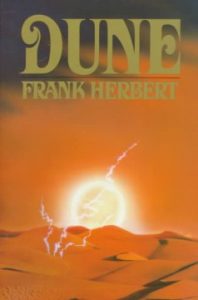The Free For All is delighted to congratulate the winners of the 67th annual National Book Award! See below for the titles, and click on the “About the book” links to see interviews and footage from the awards ceremony, courtesy of the National Book Foundation!
Fiction: The Underground Railroad, Colson Whitehead
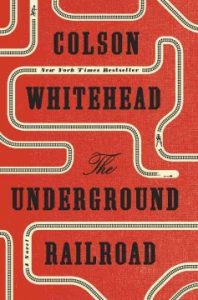 About the book: Cora is a slave on a cotton plantation in Georgia. Life is hell for all the slaves, but especially bad for Cora; an outcast even among her fellow Africans, she is coming into womanhood—where even greater pain awaits. When Caesar, a recent arrival from Virginia, tells her about the Underground Railroad, they decide to take a terrifying risk and escape. Matters do not go as planned—Cora kills a young white boy who tries to capture her. Though they manage to find a station and head north, they are being hunted.
About the book: Cora is a slave on a cotton plantation in Georgia. Life is hell for all the slaves, but especially bad for Cora; an outcast even among her fellow Africans, she is coming into womanhood—where even greater pain awaits. When Caesar, a recent arrival from Virginia, tells her about the Underground Railroad, they decide to take a terrifying risk and escape. Matters do not go as planned—Cora kills a young white boy who tries to capture her. Though they manage to find a station and head north, they are being hunted.
In Whitehead’s ingenious conception, the Underground Railroad is no mere metaphor—engineers and conductors operate a secret network of tracks and tunnels beneath the Southern soil. Cora and Caesar’s first stop is South Carolina, in a city that initially seems like a haven. But the city’s placid surface masks an insidious scheme designed for its black denizens. And even worse: Ridgeway, the relentless slave catcher, is close on their heels. Forced to flee again, Cora embarks on a harrowing flight, state by state, seeking true freedom.
Like the protagonist of Gulliver’s Travels, Cora encounters different worlds at each stage of her journey—hers is an odyssey through time as well as space. As Whitehead brilliantly re-creates the unique terrors for black people in the pre–Civil War era, his narrative seamlessly weaves the saga of America from the brutal importation of Africans to the unfulfilled promises of the present day. The Underground Railroad is at once a kinetic adventure tale of one woman’s ferocious will to escape the horrors of bondage and a shattering, powerful meditation on the history we all share.
Non-Fiction: Stamped from the Beginning: The Definitive History of Racist Ideas in America, Ibram X. Kendi
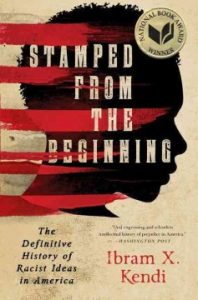 About the book: Some Americans cling desperately to the myth that we are living in a post-racial society,that the election of the first Black president spelled the doom of racism. In fact, racist thought is alive and well in America–more sophisticated and more insidious than ever. And as award-winning historian Ibram X. Kendi argues in Stamped from the Beginning, if we have any hope of grappling with this stark reality, we must first understand how racist ideas were developed, disseminated, and enshrined in American society.
About the book: Some Americans cling desperately to the myth that we are living in a post-racial society,that the election of the first Black president spelled the doom of racism. In fact, racist thought is alive and well in America–more sophisticated and more insidious than ever. And as award-winning historian Ibram X. Kendi argues in Stamped from the Beginning, if we have any hope of grappling with this stark reality, we must first understand how racist ideas were developed, disseminated, and enshrined in American society.
In this deeply researched and fast-moving narrative, Ibram X. Kendi chronicles the entire story of anti-Black racist ideas and their staggering power over the course of American history. Stamped from the Beginning uses the life stories of five major American intellectuals to offer a window into the contentious debates between assimilationists and segregationists and between racists and antiracists. From Puritan minister Cotton Mather to Thomas Jefferson, from fiery abolitionist William Lloyd Garrison to brilliant scholar W.E.B. Du Bois to legendary anti-prison activist Angela Davis, Kendi shows how and why some of our leading proslavery and pro-civil rights thinkers have challenged or helped cement racist ideas in America.
Contrary to popular conceptions, racist ideas did not arise from ignorance or hatred. Instead, they were devised and honed by some of the most brilliant minds of each era. These intellectuals used their brilliance to justify and rationalize deeply entrenched discriminatory policies and the nation’s racial disparities in everything from wealth to health. And while racist ideas are easily produced and easily consumed, they can also be discredited. In shedding much-needed light on the murky history of racist ideas, Stamped from the Beginning offers us the tools we need to expose them–and in the process, gives us reason to hope.
Poetry: The Performance of Becoming Human, Daniel Borzutzky
 About the book: Following in the path of his acclaimed collections The Book of Interfering Bodies (Nightboat, 2011) and In the Murmurs of the Rotten Carcass Economy (Nightboat, 2015), Daniel Borzutzky returns to confront the various ways nation-states and their bureaucracies absorb and destroy communities and economies. In The Performance of Becoming Human, the bay of Valparaiso merges into the western shore of Lake Michigan, where Borzutzky continues his poetic investigation into the political and economic violence shared by Chicago and Chile, two places integral to his personal formation. To become human is to navigate borders, including the fuzzy borders of institutions, the economies of privatization, overdevelopment, and underdevelopment, under which humans endure state-sanctioned and systemic abuses in cities, villages, deserts. Borzutzky, whose writing Eileen Myles has described as “violent, perverse, and tender” in its portrayal of a “kaleidoscopic journey of American horror and global horror,” adds another chapter to a growing and important compendium of work that asks what it means to a be both a unitedstatesian and a globalized subject whose body is “shared between the earth, the state, and the bank.”
About the book: Following in the path of his acclaimed collections The Book of Interfering Bodies (Nightboat, 2011) and In the Murmurs of the Rotten Carcass Economy (Nightboat, 2015), Daniel Borzutzky returns to confront the various ways nation-states and their bureaucracies absorb and destroy communities and economies. In The Performance of Becoming Human, the bay of Valparaiso merges into the western shore of Lake Michigan, where Borzutzky continues his poetic investigation into the political and economic violence shared by Chicago and Chile, two places integral to his personal formation. To become human is to navigate borders, including the fuzzy borders of institutions, the economies of privatization, overdevelopment, and underdevelopment, under which humans endure state-sanctioned and systemic abuses in cities, villages, deserts. Borzutzky, whose writing Eileen Myles has described as “violent, perverse, and tender” in its portrayal of a “kaleidoscopic journey of American horror and global horror,” adds another chapter to a growing and important compendium of work that asks what it means to a be both a unitedstatesian and a globalized subject whose body is “shared between the earth, the state, and the bank.”
Young People’s Literature: March, Book Three, Congressman John Lewis, Andrew Aydin, and Nate Powell
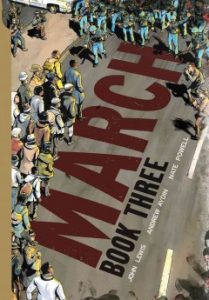 About the book: By the fall of 1963, the Civil Rights Movement has penetrated deep into the American consciousness, and as chairman of the Student Nonviolent Coordinating Committee, John Lewis is guiding the tip of the spear. Through relentless direct action, SNCC continues to force the nation to confront its own blatant injustice, but for every step forward, the danger grows more intense: Jim Crow strikes back through legal tricks, intimidation, violence, and death. The only hope for lasting change is to give voice to the millions of Americans silenced by voter suppression: “One Man, One Vote.”
About the book: By the fall of 1963, the Civil Rights Movement has penetrated deep into the American consciousness, and as chairman of the Student Nonviolent Coordinating Committee, John Lewis is guiding the tip of the spear. Through relentless direct action, SNCC continues to force the nation to confront its own blatant injustice, but for every step forward, the danger grows more intense: Jim Crow strikes back through legal tricks, intimidation, violence, and death. The only hope for lasting change is to give voice to the millions of Americans silenced by voter suppression: “One Man, One Vote.”
To carry out their nonviolent revolution, Lewis and an army of young activists launch a series of innovative campaigns, including the Freedom Vote, Mississippi Freedom Summer, and an all-out battle for the soul of the Democratic Party waged live on national television.
With these new struggles come new allies, new opponents, and an unpredictable new president who might be both at once. But fractures within the movement are deepening … even as 25-year-old John Lewis prepares to risk everything in a historic showdown high above the Alabama river, in a town called Selma.

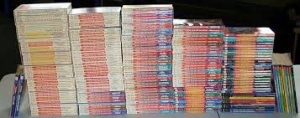
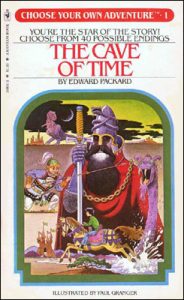 Originally published by Bantam Books, the Choose Your Own Adventure books (henceforth to be abbreviated CYOA, ok?) were one of the most popular children’s book series of the 1980’s and 1990’s,selling more than 250 million copies between 1979 and 1998. The series was based upon a concept created by Edward Packard and originally published by Vermont Crossroads Press until the control of Constance Cappel’s and R. A. Montgomery, before being bought by Bantam. They were originally written for readers between the ages of 7-14, and all featured a second-person narration, referring at all times to what you are doing, feeling, seeing, etc. In this way, readers are immediately involved in the books and whatever high-stakes, quick-paced adventure that opened in the book’s first few pages. Soon, however, you, the character, find yourself faced with a decision (see the page below); sometimes it is which path to take on a journey, or with which character to initially a conversation. Depending on your choice, you would flip to a designated page, seeing the outcome of your decision.
Originally published by Bantam Books, the Choose Your Own Adventure books (henceforth to be abbreviated CYOA, ok?) were one of the most popular children’s book series of the 1980’s and 1990’s,selling more than 250 million copies between 1979 and 1998. The series was based upon a concept created by Edward Packard and originally published by Vermont Crossroads Press until the control of Constance Cappel’s and R. A. Montgomery, before being bought by Bantam. They were originally written for readers between the ages of 7-14, and all featured a second-person narration, referring at all times to what you are doing, feeling, seeing, etc. In this way, readers are immediately involved in the books and whatever high-stakes, quick-paced adventure that opened in the book’s first few pages. Soon, however, you, the character, find yourself faced with a decision (see the page below); sometimes it is which path to take on a journey, or with which character to initially a conversation. Depending on your choice, you would flip to a designated page, seeing the outcome of your decision.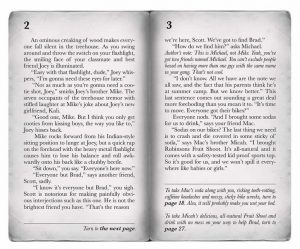
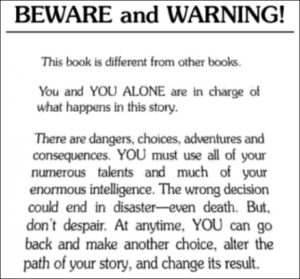 When I was a kid, I
When I was a kid, I 
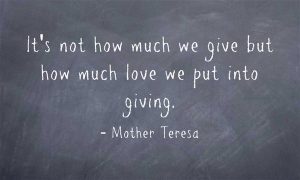
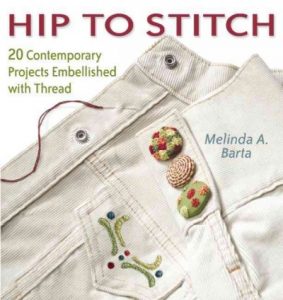 Hip to Stitch
Hip to Stitch 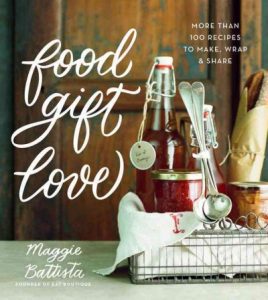 Food, Gift, Love
Food, Gift, Love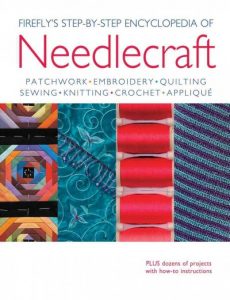 Firefly’s Step-by-Step Encyclopedia of Needlecraft
Firefly’s Step-by-Step Encyclopedia of Needlecraft 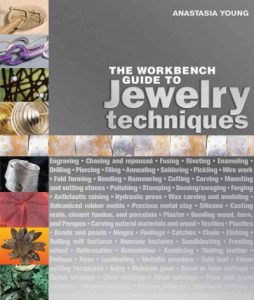 The Workbench Guide to Jewelry Techniques
The Workbench Guide to Jewelry Techniques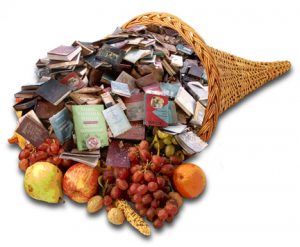
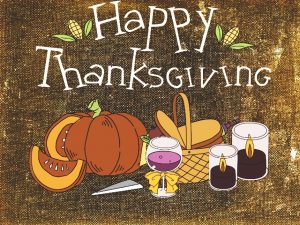

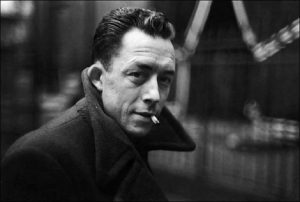 But Camus re-thought Sisyphus’ story,
But Camus re-thought Sisyphus’ story,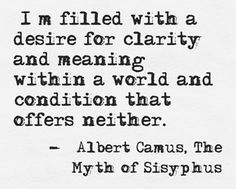
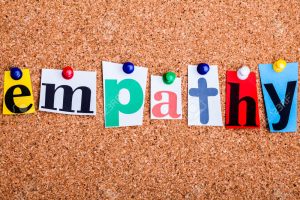
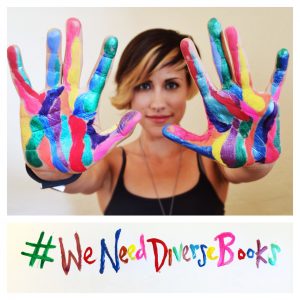 The problem is largely that we live in a world that, for all its interconnectedness, is inherently isolating. We stare at screens more than faces, we are constantly asked for comments and thoughts on topics without being given the aid of considered facts, we have been taught that shouting is the only form of communication that gets heard. But all of those habits and practices are learned. Not inherent.
The problem is largely that we live in a world that, for all its interconnectedness, is inherently isolating. We stare at screens more than faces, we are constantly asked for comments and thoughts on topics without being given the aid of considered facts, we have been taught that shouting is the only form of communication that gets heard. But all of those habits and practices are learned. Not inherent. 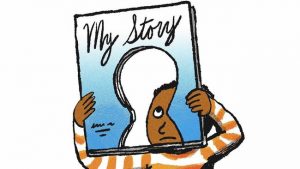 It is critically important to give children as many different kinds of stories that we can to teach them to be more adaptable and accepting–and to show them that their story, in whatever form it takes, is valid and worthy of attention. But that is no less true for adults. We all need to know what it is like to walk around in the skin of another person, and we all need to know that our story, our identity and our place in the world, is important. And reading can be an excellent tool to accomplish those goals, no matter what your age.
It is critically important to give children as many different kinds of stories that we can to teach them to be more adaptable and accepting–and to show them that their story, in whatever form it takes, is valid and worthy of attention. But that is no less true for adults. We all need to know what it is like to walk around in the skin of another person, and we all need to know that our story, our identity and our place in the world, is important. And reading can be an excellent tool to accomplish those goals, no matter what your age.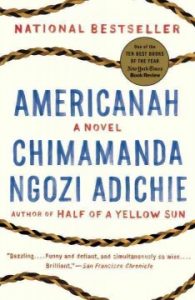
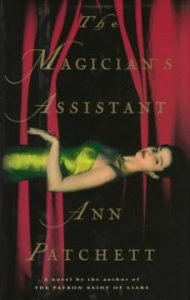 The Magician’s Assistant
The Magician’s Assistant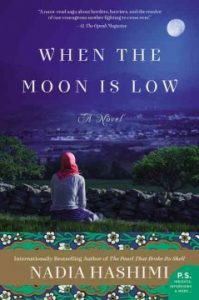 When the Moon Hung Low
When the Moon Hung Low
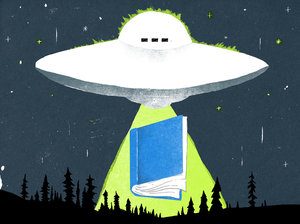 But science fiction is good for much more than passing literary references that make everyone feel a little cooler than their neighbors. And it’s good for more than just escapist reading when the world around us becomes too real. What each of these references show is that science fiction is a really powerful tool for helping us cope with our own world–and to imagine a better one. Huxley wasn’t just using up some extra ink when he penned Brave New World–he was giving voice to his fears that consumerism and economies based on mass-production could rob humanity of its uniqueness. George Orwell wasn’t just using up scrap paper when he penned 1984 (or Animal Farm, for that matter); he had seen first hand the harm that megalomaniacal leaders had on their people, the kind of pernicious fear that government surveillance provoked, and the real danger of tyranny, and his novels were meant as warnings as much as they were for entertainment.
But science fiction is good for much more than passing literary references that make everyone feel a little cooler than their neighbors. And it’s good for more than just escapist reading when the world around us becomes too real. What each of these references show is that science fiction is a really powerful tool for helping us cope with our own world–and to imagine a better one. Huxley wasn’t just using up some extra ink when he penned Brave New World–he was giving voice to his fears that consumerism and economies based on mass-production could rob humanity of its uniqueness. George Orwell wasn’t just using up scrap paper when he penned 1984 (or Animal Farm, for that matter); he had seen first hand the harm that megalomaniacal leaders had on their people, the kind of pernicious fear that government surveillance provoked, and the real danger of tyranny, and his novels were meant as warnings as much as they were for entertainment. But the point I am trying to make here is that those works that we call “science fiction” very often speak to, and reflect, the world around us far more accurately than we give them credit for doing. It isn’t just about the gizmos and gadgets (although those can be great), or about inventing new technologies to outdo what science has done today (although Jules Verne made a pretty penny doing just that). It’s about slipping the bounds of reality and tossing out that idea of “progress”. There was (and is) this notion that human endeavor happened on a straight line, and was all building towards this One Great Good (though no one seemed to agree on what that Great Good looks like, even today). Those books can be good…but they can also come across like those 1950’s ads for the “kitchen of tomorrow” (see right). They don’t make life better…they just create gadgets to distract you from the fact that you’re still stuck in a kitchen. Progressive science fiction can show that idea to be utterly limiting and outdated, and dangerous in some cases. Even better, they offer a unlimited number of alternative paths for us to imagine walking. It’s not about crafting blueprints…it’s about dreaming in multiple dimensions, and that is just fun.
But the point I am trying to make here is that those works that we call “science fiction” very often speak to, and reflect, the world around us far more accurately than we give them credit for doing. It isn’t just about the gizmos and gadgets (although those can be great), or about inventing new technologies to outdo what science has done today (although Jules Verne made a pretty penny doing just that). It’s about slipping the bounds of reality and tossing out that idea of “progress”. There was (and is) this notion that human endeavor happened on a straight line, and was all building towards this One Great Good (though no one seemed to agree on what that Great Good looks like, even today). Those books can be good…but they can also come across like those 1950’s ads for the “kitchen of tomorrow” (see right). They don’t make life better…they just create gadgets to distract you from the fact that you’re still stuck in a kitchen. Progressive science fiction can show that idea to be utterly limiting and outdated, and dangerous in some cases. Even better, they offer a unlimited number of alternative paths for us to imagine walking. It’s not about crafting blueprints…it’s about dreaming in multiple dimensions, and that is just fun.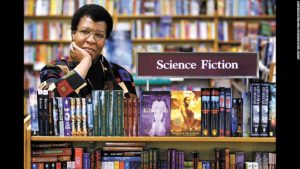
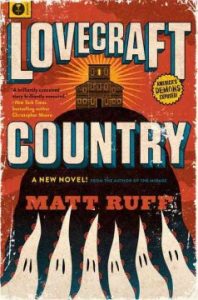
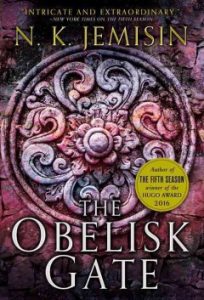 The Obelisk Gate
The Obelisk Gate